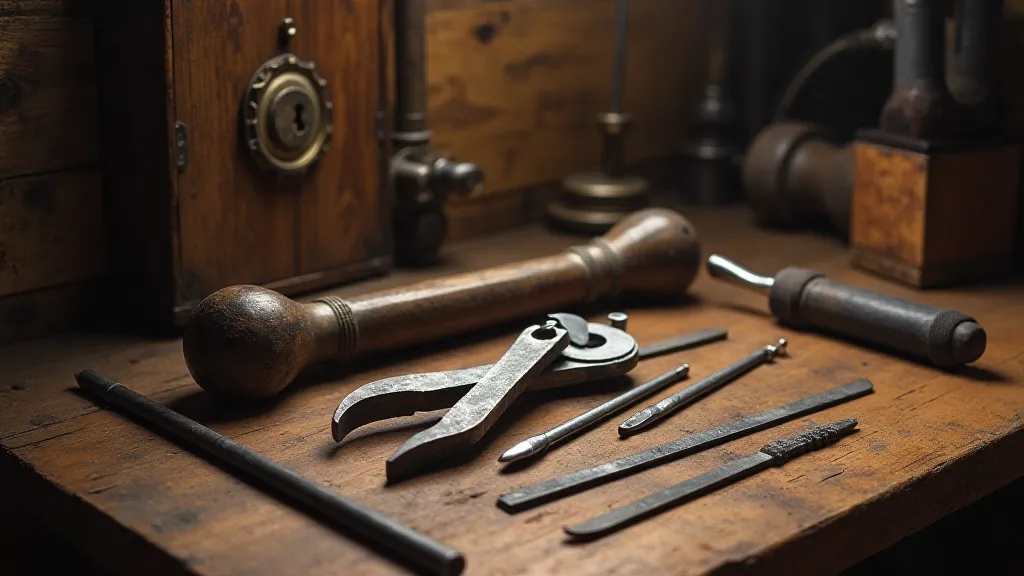The Labyrinthine Logic: Unraveling Security's Paradoxes
There's a peculiar poetry in dismantling, in understanding the intricate dance of mechanisms designed to keep things out. It’s a sentiment I first grasped not through locks and tumblers, but through the bellows of an antique accordion. My grandfather, a taciturn man of few words, restored them. Each cracked leather hinge, each rusted reed, was a puzzle to be coaxed back to life. He wouldn’t explain much – a grunt, a shake of the head, a glint in his eye – but I learned that even what appears broken can be beautiful, valuable, and profoundly revealing when understood at its core. And in a strange way, lock picking shares that same fundamental appreciation for the mechanics of restraint.
Security, at its essence, is a promise. A promise of safety, of protection, of peace of mind. We build walls, install alarms, and craft increasingly complex locks to enforce that promise. But the very act of building those defenses also births the counter-force – the relentless pursuit of circumvention. It’s a philosophical paradox, a continuous arms race between creator and challenger. This isn't about malicious intent; it’s about understanding. It’s about admiring the ingenuity of the designer and appreciating the skill of the dismantler. It's about the eternal 'why' that fuels both.

The Historical Context: From Ward to Waverly
The history of locks is as old as the desire to safeguard possessions. Early iterations were rudimentary, often little more than wooden bolts. The pin tumbler lock, arguably the most common type today, began to take shape in the 18th century, evolving from the work of Robert Barron and later refined by Linus Yale. These early locks were susceptible to simple picking methods, and the subsequent advancements were spurred by the very attempts to bypass them. Consider the evolution of the Waferly padlock – a device initially touted for its superior security. Yet, its design principles were quickly analyzed and exploited, demonstrating the inherent vulnerability of even the most meticulously crafted systems.
The act of lock picking itself has a surprisingly rich and often romanticized history. In the 19th century, it wasn’t a clandestine activity confined to shadowy figures. Skilled "gentlemen locksmiths" offered their services, often in the legitimate repair and re-keying of locks. The ability to pick a lock, then as now, was a testament to one's understanding of mechanics and a subtle mark of ingenuity. It was a skill often passed down within families, shrouded in an air of quiet pride.
The Tools of the Trade: More Than Just Metal
The tools themselves are deceivingly simple: tension wrenches, picks of various shapes and sizes. They're crafted from metal – often steel – but the true artistry lies not just in the materials but in the precision of their manufacture. A poorly made pick will be useless; it will bend, break, or simply refuse to interact with the internal mechanisms. It’s a feeling similar to struggling with a dull chisel when restoring old furniture – frustration compounded by the knowledge that the inherent potential for a beautiful outcome is being squandered.
The process itself requires a surprising degree of tactile sensitivity. You're not forcing anything; you’re feeling, listening, interpreting subtle clicks and resistances. It’s akin to diagnosing a malfunctioning accordion – feeling the air leakage, hearing the imperfect note, and knowing precisely where the problem lies within the complex network of bellows and reeds. It’s a process of subtle persuasion, of understanding the ‘language’ of the lock.

Ethical Considerations: Respecting the Art and the System
It’s crucial to acknowledge the ethical considerations inherent in this pursuit. Lock picking, without authorization, is illegal and should never be undertaken with malicious intent. This is strictly for recreational and educational purposes – a demonstration of understanding, a celebration of craftsmanship. Think of it as examining the inner workings of a grandfather clock - marveling at the gears and escapement, but never attempting to steal the timepiece. The knowledge gained should be used responsibly, fostering a deeper appreciation for security systems and promoting ethical practices.
The very act of circumventing a lock, even with permission, highlights a profound truth: security is a relative concept. What is impenetrable today will be vulnerable tomorrow. This isn't a statement of pessimism, but one of realism – a constant reminder that ingenuity will always be challenged, and systems must adapt to maintain their effectiveness. It emphasizes the need for ethical innovation, for a balance between robust security measures and the preservation of individual liberties.
Beyond the Tumblers: A Deeper Appreciation
Ultimately, the exploration of lock picking offers more than just a technical skill. It fosters a deeper appreciation for the ingenuity of human design, the beauty of mechanical precision, and the enduring paradox of security. It’s a journey into the intricate logic that governs our attempts to protect what we value, a reminder that the pursuit of safety is a continuous dance between creation and circumvention. Like the quiet satisfaction of bringing a neglected accordion back to life, unlocking the secrets of a lock isn't about intrusion; it’s about understanding.

Just as restoring an old accordion reveals the dedication of the original craftsman, dismantling a lock offers a unique glimpse into the mind of its creator, revealing the intricate logic behind our attempts to secure the world around us.





